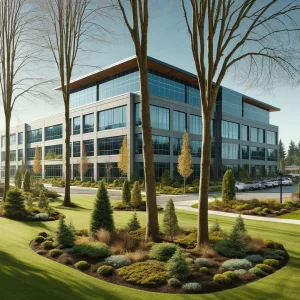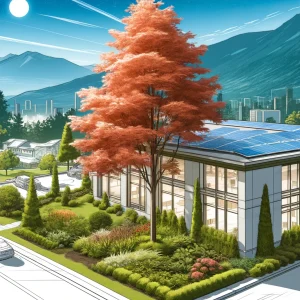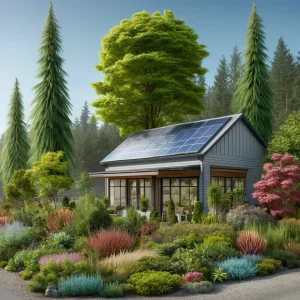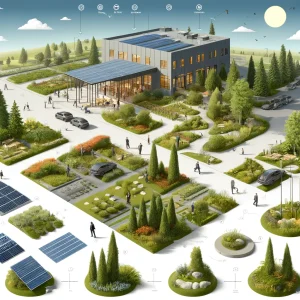In the quest for sustainability and cost reduction, commercial landscapers in British Columbia are turning to an often-overlooked ally: strategic landscaping. This guide explores how the right combination of plant placement and landscaping can significantly reduce energy costs, providing financial benefits and environmental sustainability.

The Power of Plants: A Cost-Benefit Analysis
The strategic placement of trees, shrubs, and other plants around commercial properties isn’t just about aesthetics—it’s a calculated effort to reduce energy consumption. For instance, when placed to the south and west of buildings, deciduous trees provide shade during the summer, reducing the need for air conditioning. In winter, they allow sunlight to warm the buildings after they shed their leaves, cutting heating costs. Research suggests that landscaping tactics can reduce a building’s cooling energy consumption by up to 30%.

Overcoming Local Challenges
Landscaping in British Columbia presents unique challenges, including strict environmental regulations and diverse microclimates. However, this can be turned into an advantage with careful planning. For example, utilizing native plants ensures compliance with local biodiversity goals and reduces water usage and maintenance costs due to their adaptation to the local climate.

Integrating Hardscaping for Enhanced Efficiency
Hardscaping elements like reflective pavements, stone walls, and water features can significantly influence a property’s energy efficiency. Reflective surfaces reduce heat absorption, thereby lowering the ambient temperature around buildings. Strategically placed water features can provide cooling effects, reducing the need for air conditioning.
Examples of Effective Hardscaping:
- Reflective Pavements: Using light-coloured concrete or asphalt for parking areas reflects sunlight away from the surface, keeping the surrounding areas cooler.
- Water Features: Small ponds or fountains can cool the air through evaporation, creating a more pleasant microclimate.

Choosing the Right Plants
In British Columbia, the selection of plants for energy-efficient landscaping is critical. Native species like the Western Red Cedar offer excellent windbreaks, while deciduous trees like the Bigleaf Maple provide ample shade during summer. Non-native, climate-adapted plants like the Japanese Maple can offer aesthetic and functional benefits.
Plant Examples for Energy Efficiency:
- Western Red Cedar (Thuja plicata): Acts as a windbreak and offers year-round greenery.
- Bigleaf Maple (Acer macrophyllum): Provides substantial shade in summer while allowing sunlight through in winter.
- Japanese Maple (Acer palmatum): This tree offers shade and aesthetic value, and there are varieties suited to British Columbia’s climate.
A Step-by-Step Guide to Implementation
- Site Analysis: Assess the property’s current energy usage and identify areas where landscaping could have the most impact.
- Plant Selection: Choose native and climate-adapted plants that will thrive with minimal maintenance.
- Strategic Placement: Position trees and shrubs to provide maximum shade and wind protection, considering the building’s orientation and the local climate.
- Incorporate Hardscaping: Design hardscaping elements to complement the landscaping, enhancing the property’s aesthetics and energy efficiency.
- Ongoing Maintenance: Establish a maintenance plan that supports the long-term health and effectiveness of the landscaping.

Real-World Success Stories
Many commercial properties across British Columbia have already reaped the benefits of energy-efficient landscaping. For example, a Vancouver office complex reduced its summer cooling costs by 25% after implementing a strategic landscaping plan that included planting deciduous trees on its southern exposure and installing reflective pavements.
Strategic landscaping offers a sustainable, cost-effective solution for enhancing the energy efficiency of commercial properties in British Columbia. By carefully selecting and placing the right plants and hardscaping elements, commercial landscapers can significantly impact a property’s energy consumption, proving that good design looks great and pays off.